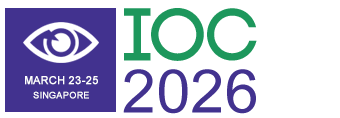Infectious Eye Diseases
Addressing pathogens that compromise ocular health remains a critical component of global eye care. Infectious eye diseases span bacterial, viral, fungal, and parasitic origins, often with rapid onset and potential for lasting visual impairment. Early detection and tailored antimicrobial therapy are vital in cases such as herpetic keratitis, fungal endophthalmitis, and Acanthamoeba infections. Molecular diagnostics and culture techniques continue to improve identification of rare pathogens. In high-risk areas, public health initiatives focus on preventing trachoma and onchocerciasis through antibiotics and vector control programs. Immunocompromised individuals require vigilant monitoring, as opportunistic infections can progress swiftly. Cross-disciplinary collaboration with infectious disease specialists and microbiologists enhances treatment efficacy. Increasing antimicrobial resistance is pushing researchers to develop novel therapeutics and vaccines, ensuring this evolving threat remains manageable in clinical settings.

Tim Jackson
King’s College London, United Kingdom
Shadrokh Nabili
University Hospitals of Morecambe Bay NHS Foundation Trust, United Kingdom
Anna Maria Bassi
University of Genoa, Italy
Pio Conti
University of Chieti, Italy
Gowhar Ahmad
Florence Hospital Srinagar, India
Hyungju Park
Gangnam Tokyo Eye Clinic, Korea, Republic of




Title : Rare and interesting case of Goldenhar’s syndrome in a 3 years old male child
Gowhar Ahmad, Florence Hospital Srinagar, India
Title : Management of common vitreoretinal lesions: An overview and update
Tim Jackson, King’s College London, United Kingdom
Title : Optimizing astigmatism management in refractive cataract surgery
Shadrokh Nabili, University Hospitals of Morecambe Bay NHS Foundation Trust, United Kingdom
Title : Comparative outcomes of a newly modified trabeculectomy versus conventional trabeculectomy
Hyungju Park, Gangnam Tokyo Eye Clinic, Korea, Republic of
Title : Lumevoq gene therapy in leber hereditary optic neuropathy
Magali Taiel, GenSight Biologics, France
Title : Intra orbital wooden foreign bodies: A retrospective study of 30 cases
Chandana Chakraborti, Regional Institute of Ophthalmology, Medical College & Hospital, India